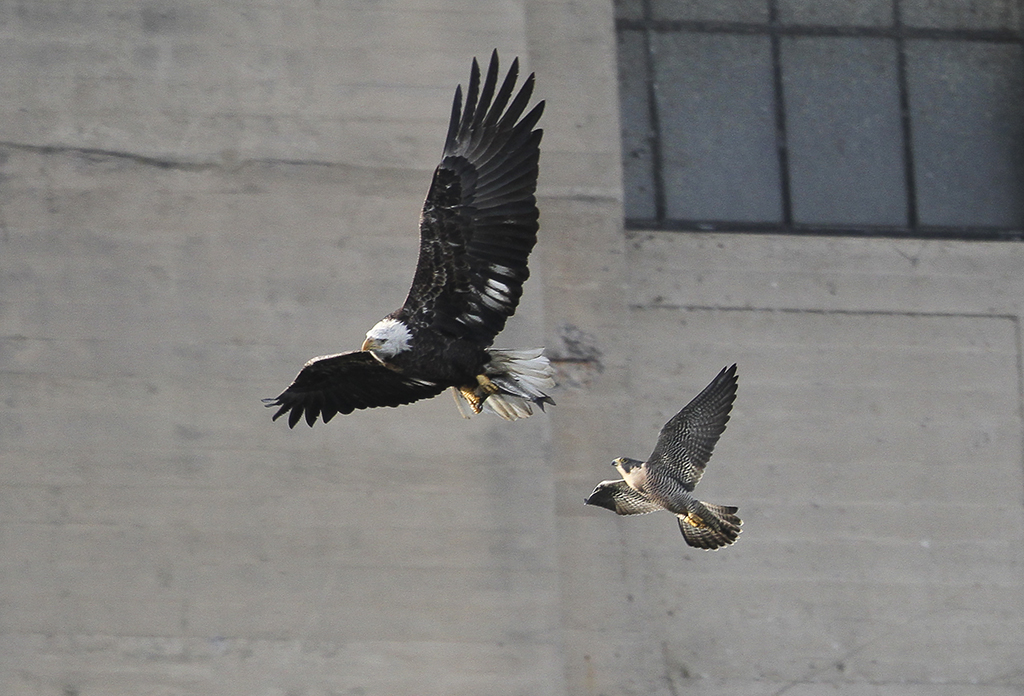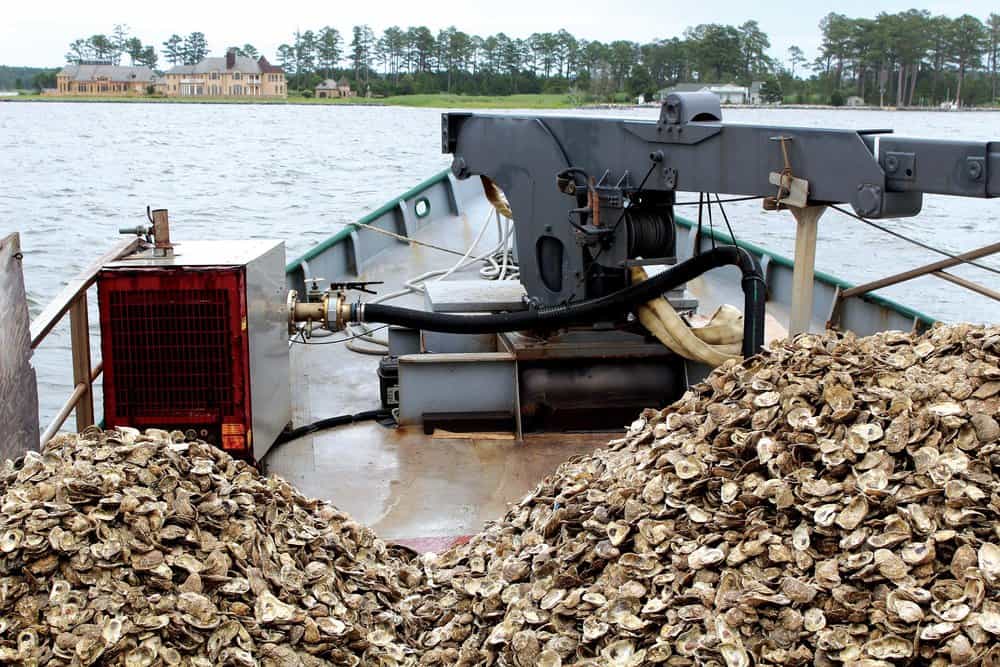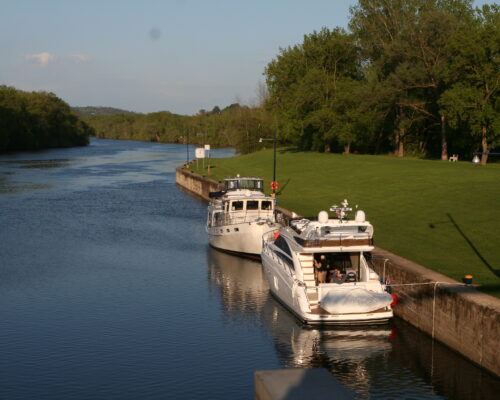An air raid siren sounds and spinning hazard lights start flashing. Men in chest waders walk out of the river and move their equipment to higher ground. With the start of the siren, several eagles start calling to each other and others begin to circle overhead. The water near a concrete wall starts to churn and roll. The water level at the wharf rises over two feet and the dry beach is now under water. The dam turbines are now turning—making electricity. Gulls of all varieties are dipping into the roiling water to grab tiny fish and the eagles swoop down to pull larger catches out of the fast moving water.
It’s a spectacle of wildlife and engineering that draws birders, photographers and adventurers to the Conowingo Dam biannually.
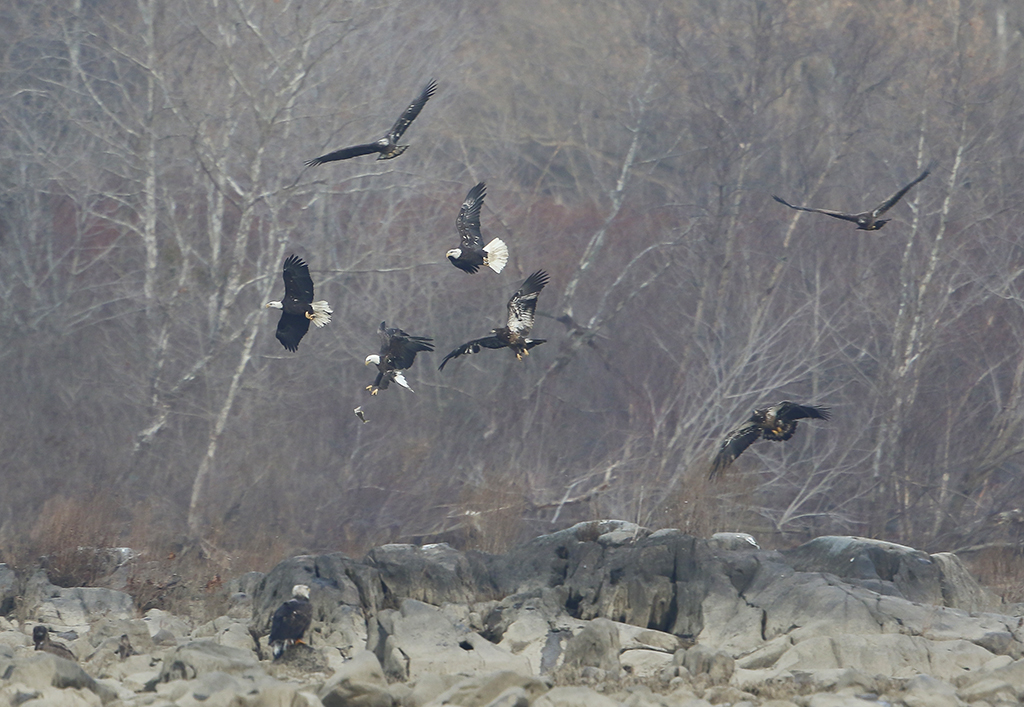
Twice a year, when migrating fish are on the move, the Conowingo Dam attracts large numbers of eagles. On multiple occasions, I have counted over 150 eagles lining the river on rocks, in the power-line towers, and in trees. The large raptors see struggling fish that are injured by the turbines as easy prey and they drop out of the sky to get a meal. Other eagles think it is easier to be a thief and chase down an eagle slowed down by a heavy fish. On occasion an eagle will use the presence of human onlookers to distract an attacker.
I have witnessed a chased eagle drop a fish directly onto a parked car, but most of the time the fish lands in the waters and the thief tries to retrieve it. Sometimes the eagles fall in a spiral, both locked onto a prize fish.
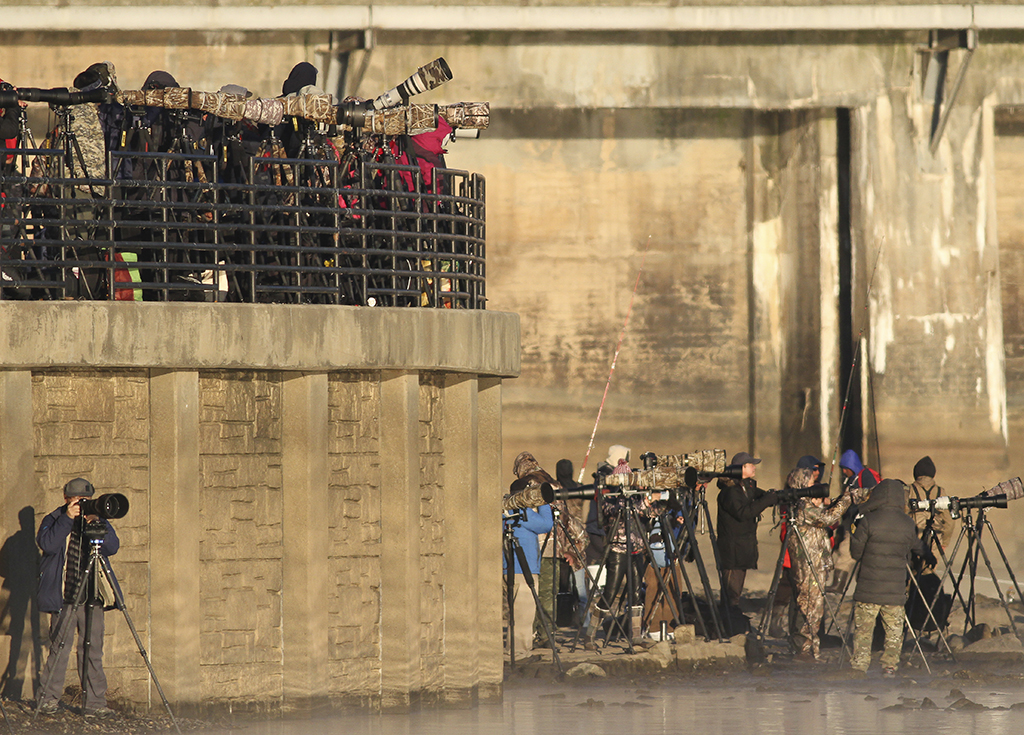
The eagles’ drama draws visitors to the dam but there are many other interesting birds to see. The Susquehanna River and the Conowingo Dam are some of the best birding areas in Maryland. Eight species of gulls have been sighted here. Migrating warblers rest along the shore. Great blue herons have a rookery at the dam. Peregrine falcons and osprey build nests on the dam structure and chase any eagles that get too close. Baltimore orioles prefer nesting in the sycamore trees that line the river and indigo buntings have taken up residence on the hillside. Black vultures sometimes seem to be on every tree and rock.
The area at the foot of the dam is called Fisherman’s Park. Hikers can follow a path from the park to the Deer Creek picnic area and on to the lower Susquehanna Heritage Greenway Trail which follows the west bank of the river to Susquehanna State Park. The route begins with the dramatic eagles at the dam and then reveals wading birds, ducks, warblers, flycatchers and other passerine species along the river.
Many people go to Fisherman’s Park just for the hiking. The Greenway Trail is pretty flat and easy, making it a good trail for children. For a challenge, the steep Mason-Dixon Trail stakes off uphill north of the dam near the first gate and continues for some 30 miles north. The terrain is difficult in some sections but walking on the side of a huge valley can present dramatic views. Currently however, some trails near the dam have been closed to prevent the spread of avian flu discovered in black vultures. Call first or check online to see if they are open.
However, two more trails across the river on the north side are currently open. Funks Pond trail is an easy 1.5-mile hike. The Octoraro Trail is the same length but a little harder. Parking is available for both.
Of course, Fisherman’s Park is named for the fishing. Migrating shad, striped bass, perch and snakeheads are present in great numbers at certain times of the year. A variety of catfish, including blue catfish, seem to be always present, and surprisingly, walleye can frequently be caught near the dam. The trick to fishing the dam is to figure out how to avoid the snags and yet get your lure or bait deep enough for the fish to find it.
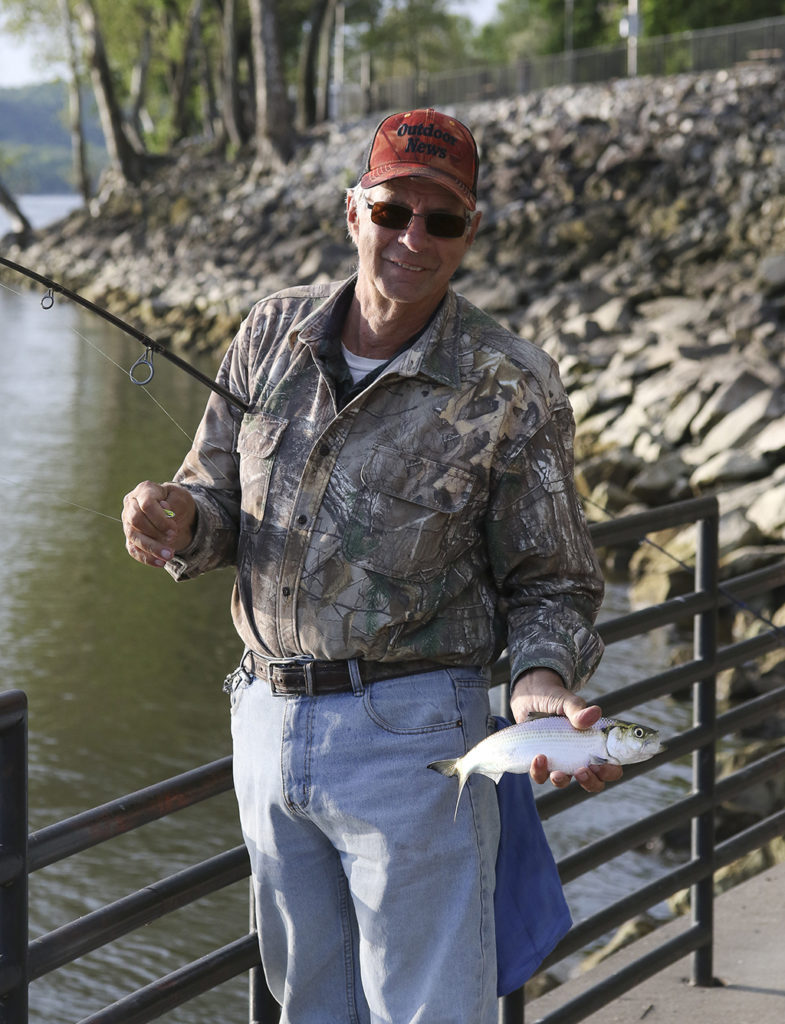
Earlier this month, I spoke to Brion Zutell, a 71-year-old resident of Felton, Pennsylvania. During this year’s spring shad run, he has been coming to the dam twice a week. As I watched, he used a small fluorescent green spoon with an added in-line weight and was able to pull in 10 hickory shad in less than 30 minutes. Earlier he had caught two of the larger American shad. Further down river, he has caught numerous blue catfish well over 20 pounds. He fishes for fun and releases all the shad (except gizzard shad which he uses for catfish bait). With his encouragement, I was able to catch seven hickory shad, one American shad and three channel catfish.
The best times for birding and fishing are in the early morning and late afternoon but the eagles will become alert whenever the turbines start turning. The turbine schedule is published through a call center. The dam is located where Route 1 crosses the Susquehanna.
The Fisherman’s Park is located at 2569 Shure’s Landing Road, Darlington, Maryland, and is open 30 minutes before sunrise to 30 after sunset (but the times are usually more liberal than that).
Conowingo Visitors Center, 4948 Conowingo Road Darlington, MD, 21034, (410) 457-2426

